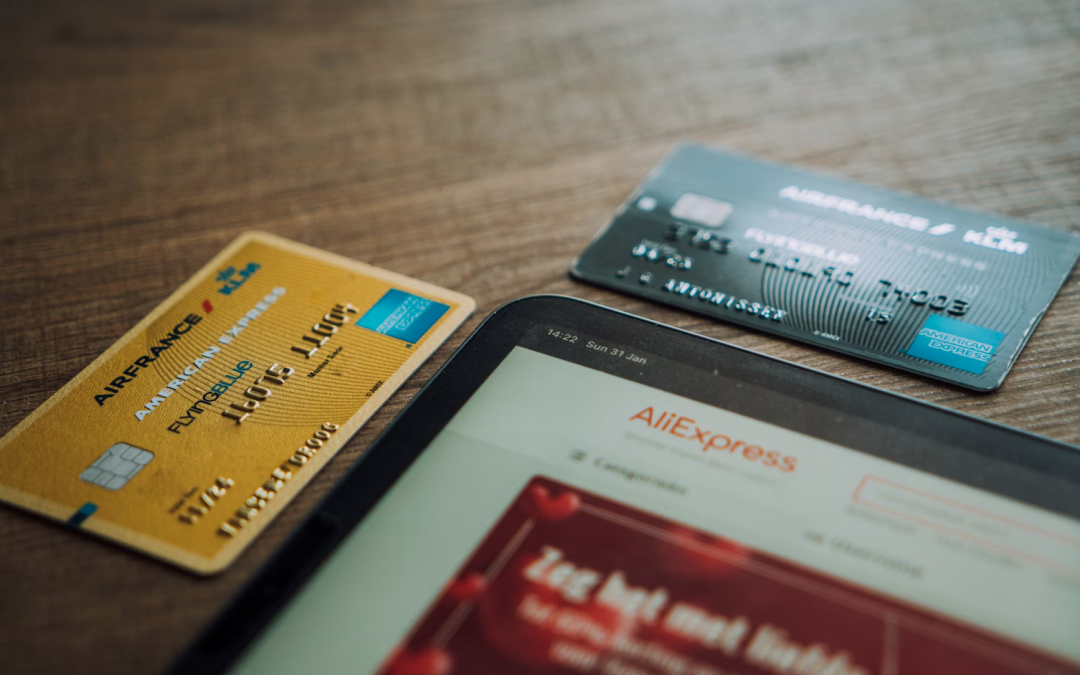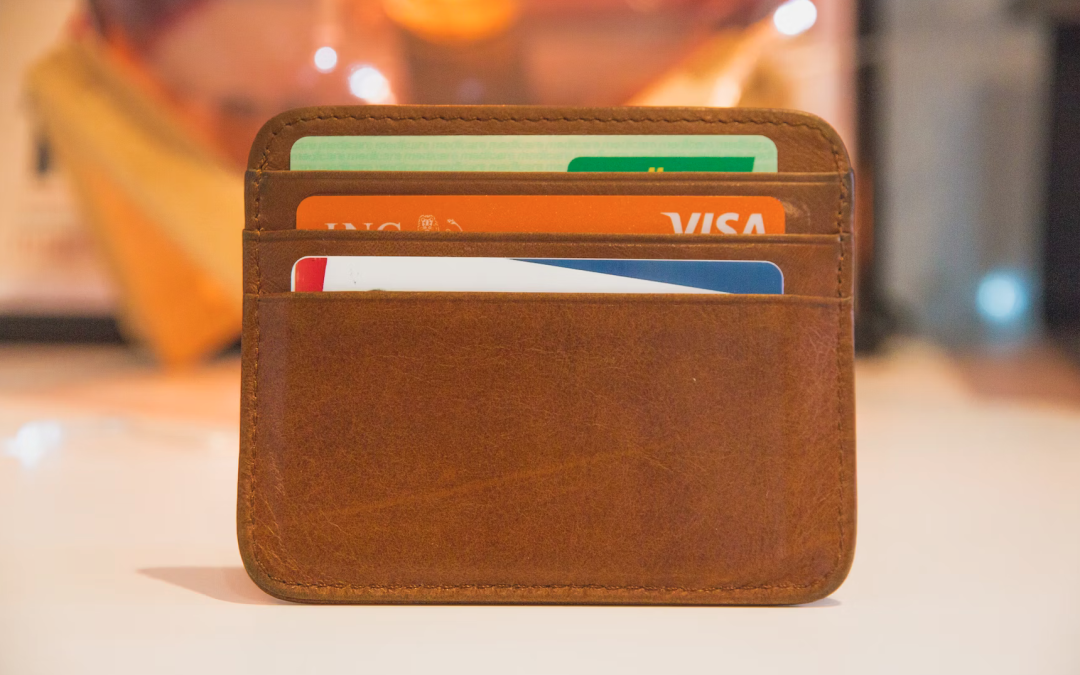
by Andrea Carson | Aug 16, 2023 | Credit Cards
The Pros and Cons of Being an Authorized User on Credit Card Accounts
When it comes to building credit or managing finances, becoming an authorized user on someone else’s credit card account can be an option worth considering. Being an authorized user allows you to benefit from the primary account holder’s credit history and responsible credit behavior. However, like any financial arrangement, there are both pros and cons to consider before becoming an authorized user. In this blog post, we will explore the advantages and disadvantages of being an authorized user on credit card accounts.
Pros:
1. Building or Improving Credit History: As an authorized user, the credit history of the primary account holder can positively impact your credit score. If the primary account holder has a long history of on-time payments and responsible credit usage, it can help boost your creditworthiness.
2. Establishing Credit at an Early Age: Being added as an authorized user can be an excellent way for young adults or those new to credit to begin building their credit history. It can provide them with a head start in establishing a positive credit profile.
3. Faster Credit Score Improvement: If you have a limited or poor credit history, becoming an authorized user on an account with a good credit history can help improve your credit score more quickly than starting from scratch.
4. Access to Credit Card Benefits: As an authorized user, you may enjoy some of the perks and benefits offered by the credit card, such as rewards points, cashback, or travel benefits, without being responsible for managing the account.
5. No Liability for Debt: As an authorized user, you are not legally responsible for the debt incurred on the credit card. If the primary account holder defaults on payments, it won’t directly affect your credit score.
Cons:
1. No Control Over the Account: As an authorized user, you have no control over how the credit card account is managed. If the primary account holder misses payments or racks up debt, it could negatively impact your credit score.
2. Potential Relationship Strain: Adding someone as an authorized user means granting them access to your credit account. If the primary account holder is not responsible with their credit usage, it could create tension in the relationship.
3. Difficulty in Removing Yourself: While the primary account holder can remove you as an authorized user, it may require their cooperation to do so. If they are uncooperative, you may face challenges in detaching yourself from the account.
4. Limited Impact on Credit History: Being an authorized user may not have as significant an impact on your credit history as having accounts in your name. Lenders may consider this when assessing your creditworthiness.
5. Potential Risk of Overspending: If the primary account holder is not financially responsible, they may accumulate a large credit card balance, which could impact their credit and, in turn, affect your credit score as an authorized user.
Conclusion:
Being an authorized user of someone else’s credit card account can be beneficial in certain situations, particularly for individuals looking to build or improve their credit history. It provides an opportunity to piggyback on the credit history of a responsible cardholder. However, there are potential drawbacks, such as a lack of control over the account and the possibility of strained relationships if financial issues arise.
Before becoming an authorized user, discussing the arrangement with the primary account holder and setting clear expectations regarding credit card usage and payment responsibilities is essential. Additionally, continue to be proactive in building your credit independently by opening and managing your credit accounts responsibly. Balancing the benefits and potential risks will help you decide whether being an authorized user is the right choice for your financial journey.

by Andrea Carson | Aug 9, 2023 | Credit Cards, Finances
Negotiating a Lower Interest Rate on Your Credit Cards: A Step-by-Step Guide
Paying high-interest rates on credit cards can be a significant financial burden, making it challenging to pay off debt and achieve financial goals. However, with the right approach, you can negotiate a lower interest rate on your credit cards and save money in the long run. In this step-by-step guide, we’ll walk you through the process of negotiating a lower interest rate with your credit card issuer.
Step 1: Gather Information
Start by gathering information about your credit card account. Take note of your current interest rate, outstanding balance, and payment history. Research current interest rates offered by other credit card companies, as this information will be helpful during the negotiation process.
Step 2: Know Your Credit Score
Your credit score plays a significant role in determining the interest rate you receive on credit cards. Check your credit score and credit report to ensure accuracy and identify any potential areas for improvement. A higher credit score will strengthen your negotiating position, as it demonstrates responsible credit management.
Step 3: Be a Valued Customer
Credit card companies value loyal customers, so if you have a good payment history and have been with the same issuer for an extended period, use this as leverage during the negotiation. Highlight your positive track record of making timely payments and responsible credit usage.
Step 4: Call the Credit Card Issuer
Contact the customer service number on the back of your credit card and ask to speak with a representative about lowering your interest rate. Be polite and patient during the call. Explain that you are a valued customer and that you are interested in obtaining a lower interest rate to reduce your financial burden and continue using the credit card responsibly.
Step 5: Be Prepared to Negotiate
The customer service representative may offer you a lower interest rate immediately, or they may need to transfer you to a different department. Be prepared to negotiate and provide reasons why you believe you deserve a lower rate. Mention your good credit history, your intention to remain a loyal customer, and any competing offers from other credit card companies.
Step 6: Be Persistent
If the first representative you speak with does not provide the desired rate reduction, don’t be discouraged. Politely ask to speak with a supervisor or a retention specialist who has more authority to negotiate interest rates. Persistence can pay off, and you may find success with a different representative.
Step 7: Mention Other Offers
If you have received pre-approved offers from other credit card companies with lower interest rates, mention them during the negotiation. Credit card issuers want to retain customers, and they may be willing to match or beat competing offers to keep you as a client.
Step 8: Be Willing to Compromise
Negotiating a lower interest rate may involve some compromise. If the credit card issuer cannot lower the rate to your desired level, ask if they can reduce it by a smaller amount. Every bit of interest reduction can help you save money over time.
Step 9: Document the Agreement
If you successfully negotiate a lower interest rate, make sure to get the agreement in writing. Review the terms and conditions, and ensure that the new interest rate will apply to both current and future balances.
Step 10: Maintain Responsible Credit Habits
Once you secure a lower interest rate, maintain responsible credit habits. Continue making on-time payments and avoid maxing out your credit cards. Responsible credit management will strengthen your creditworthiness and put you in a better position for future negotiations.
Conclusion
Negotiating a lower interest rate on your credit cards requires preparation, persistence, and effective communication. By knowing your credit score, being a valued customer, and leveraging competing offers, you can increase your chances of success. Remember to remain polite and patient during the negotiation process, and don’t be afraid to ask for a supervisor if needed. With careful planning and negotiation, you can reduce your interest rates and take significant steps towards achieving financial freedom.

by Andrea Carson | Aug 2, 2023 | Credit Cards, Finances
Managing Maxed-Out Credit Cards: Steps Toward Financial Recovery
Maxing out credit cards can be a stressful and overwhelming situation, leaving many individuals feeling trapped in a cycle of debt. However, it’s essential to remember that you’re not alone, and there are practical steps you can take to address this challenge and work towards financial recovery. In this blog, we will explore what to do when your credit cards are maxed out and how to regain control of your financial situation.
1. Assess Your Debt
The first step in addressing maxed-out credit cards is to face the reality of your debt. Gather all your credit card statements and calculate the total outstanding balance. Understanding the extent of your debt is crucial in developing a plan to tackle it effectively.
2. Create a Budget
Developing a comprehensive budget is essential to manage your finances and pay off your debts. List all your sources of income and categorize your monthly expenses. Identify areas where you can cut back on spending and redirect those funds towards debt repayment. A well-structured budget will provide a clear picture of your financial situation and guide you towards becoming debt-free.
3. Prioritize Debt Repayment
When dealing with multiple maxed-out credit cards, focus on prioritizing debt repayment. Two common strategies are the snowball method and the avalanche method. The snowball method involves paying off the smallest debt first while making minimum payments on other cards. Once the smallest debt is paid off, move on to the next smallest, creating momentum as you eliminate debts. The avalanche method prioritizes paying off the debt with the highest interest rate first, saving more on interest payments over time.
4. Negotiate with Credit Card Companies
If you’re struggling to keep up with credit card payments, consider reaching out to your credit card companies. Explain your financial situation and inquire about possible hardship programs or payment plans. Some creditors may be willing to lower interest rates, waive late fees, or work out a revised payment schedule to help you manage your debt.
5. Consolidate Debt
Debt consolidation involves combining multiple debts into a single, more manageable loan or credit line. This can be a useful option if you have high-interest credit card debt. Research balance transfer credit cards or personal loans with lower interest rates to consolidate your credit card balances. However, be cautious and read the terms carefully, as some balance transfer offers might come with introductory rates that increase after a certain period.
6. Build an Emergency Fund
Having an emergency fund is essential, especially when working to pay off maxed-out credit cards. Establishing a savings buffer can prevent you from relying on credit cards in case of unexpected expenses. Aim to set aside three to six months’ worth of living expenses in an easily accessible savings account.
7. Avoid New Credit Card Debt
Resist the temptation to open new credit cards or incur additional debt while you’re working on paying off existing ones. Focus on sticking to your budget and prioritizing debt repayment to prevent your financial situation from getting worse.
8. Seek Professional Help if Necessary
If managing maxed-out credit cards becomes overwhelming, consider seeking assistance from a financial counselor or advisor. These professionals can offer personalized guidance and support in developing a debt management plan tailored to your specific needs.
9. Celebrate Progress
Paying off maxed-out credit cards is a challenging journey, but it’s essential to celebrate the progress you make along the way. Acknowledge each milestone and debt paid off, no matter how small. Celebrating achievements will help you stay motivated and maintain a positive outlook on your financial recovery.
10. Learn from the Experience
Finally, use this situation as a learning experience to build better financial habits. Take the lessons you’ve learned from managing maxed-out credit cards and apply them to your future financial decisions. Practice responsible credit card usage, stick to your budget, and prioritize saving to avoid falling into debt again.
Conclusion
Dealing with maxed-out credit cards may seem daunting, but with determination and a well-structured plan, you can overcome this financial challenge. Assess your debt, create a budget, and prioritize debt repayment using suitable strategies. Negotiate with credit card companies if needed and consider debt consolidation options. Building an emergency fund and seeking professional help when necessary are crucial steps in regaining control of your financial situation. Stay committed to your financial goals, celebrate your progress, and use this experience to build a brighter financial future. Remember, with perseverance and financial discipline, you can conquer your debt and achieve financial freedom.

by Andrea Carson | May 3, 2023 | Credit Cards, Uncategorized
Credit cards come with several hidden benefits. Are you aware of some of the perks of using your card? Credit card companies offer multiple bonuses to help you get the most out of your card.
Check the terms of your credit cards for these benefits:
- Roadside assistance. Did you know credit cards often offer roadside assistance similar to AAA?
- This perk varies considerably based on your credit card provider. Companies either offer free service or a paid service. You must carefully check the policies as you sign up for this perk.
- If you’re stranded and need help, roadside assistance can rescue you.
- Longer warranties. Your credit card may extend your warranties. Did you purchase an appliance or electronic device with your favorite credit card?
- Protection from cancellations. Did you miss your concert or play? Credit card companies can refund the money you spend on tickets. However, you have to use the card to make the initial purchase.
- Even if it’s your fault you missed an event, you might still get a refund. Some carriers only provide this service, so check your card before you claim this benefit.
- Exclusive access while you travel. The fancy airport lounges can be yours if you have the right card.
- Credit cards can offer you the chance to stay in the best airport lounges and hotels at no extra charge. These exclusive offers vary greatly based on your card, but many will grant you special access. Enjoy a unique cocktail or appetizer while you wait for your next flight.
- Extra help while you travel. The lounges are just one travel benefit. If you have an emergency while you’re traveling, credit cards can help you. They offer services such as insurance to help you if your luggage disappears or your phone is lost.
- Companies can offer assistance in several ways. They may replace the luggage or send you money so you can replace it yourself. They may also help you track down the bags.
- Replacing stolen items. Was an item you purchased stolen?
- If one of your purchases is stolen, credit cards can help you. You can report it to them if you paid for the item with a credit card. This will vary by provider, so check your card.
- Items that can be replaced vary from electronics to furniture. However, only some things are covered. For example, stolen food is covered by only some cards.
- Help return items. The sweater you purchased is too pink, and the shoes are too tight. Your credit card can help you return these items.
- If the person or business refuses to return the items, the credit card will refund it anyway. This is done within 90 days of the purchase.
- You must save the receipt and tags to ensure everything is covered.
- Credit cards limit how much money can be refunded, so costly items are usually not covered. In addition, some things like food may not be a category that falls into the help section.
Credit card perks are often hidden in the fine print. However, you can benefit significantly by being aware of these benefits.




